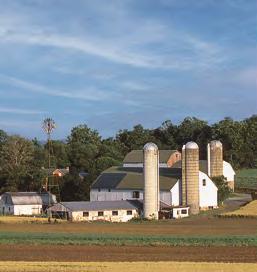
3 minute read
WELCOME Spring 2023!
We Are Open Regular Hours ALL YEAR LONG!
CACKLEBERRY FARM ANTIQUE MALL IS CELEBRATING THEIR 26TH YEAR!

Located at 3371 Lincoln Highway East, Paradise, Pennsylvania, on Route 30. Four miles west of Route 41 and only six miles east of Rockvale Square Outlet Mall. They are only minutes away from everywhere and everything Lancaster County has to offer. It's Not Just an Antique Mall – It’s Your Destination!
WITH OVER FIVE MILLION DOLLARS OF INVENTORY, their huge 26,000 square foot facility houses a wide variety of antiques and collectibles, displayed by over 125 dealers featuring fine items such as: furniture, glassware, Railroad, Mining and Fire Fighting Memorabilia, coins, sterling silver, clocks, advertising, jewelry, fine china, toys, books, postcards, trains, Christmas, pottery, linens, primitives, kitchenware & much, much more! It is impossible to tell you everything they have to offer. You will be amazed at the quality selection.
HOUSED INSIDE THE ANTIQUE MALL, IS AN OLD TIME GENERAL STORE, which will take you back in time to the Mom & Pop stores of years ago. With a wide variety of antique and collectibles including Pharmacy, Tool Supply, Barber Shop, Hardware Store, Haberdashery and more!! They offer convenient parking for over 100 vehicles, with a spacious area for campers, trailers, and tour buses. You will find it such a pleasure to shop in their clean, climate–controlled, brightly lit and carpeted mall. Absolutely one of The Best shopping experiences in Lancaster County! As if your shopping experience couldn't possibly be any better, a Gift Shop and Restaurant are located on the premises to make your memorable day complete!
OPEN ALL YEAR: MONDAY THROUGH SATURDAY 9:30 AM to 5:00 PM, Sunday 10:00 AM to 5:00 PM, closed on Tuesday. Visa / MasterCard / Discover / Debit Cards accepted. Gift Certificates, Layaway and Shipping Available. For more information call: (717) 442–8805 during business hours or visit us on at www.CackleberryFarmAntiqueMall frontier county needed a highway to connect it with the provincial capital of Philadelphia. The road that was
STOP 1: ON THE AMISH FARM
Observe the milking process and discover “Amish electricity” as you learn that the Amish do not milk cows by hand.

STOP 2: AMISH COTTAGE INDUSTRY
As the Amish population grows, more Amish turn to home businesses rather than farming. Visit an Amish workshop to see what they make and how they make it.
STOP 3: AT THE AMISH HOME constructed is now Route 340, still referred to as the “Old Philadelphia Pike.” Soon, it was apparent that the Pike was insufficient to handle the increasing traffic, and in 1790, a commission to
We’ll go to the home of one of our Amish neighbors for a chance to sit, chat, and visit the Amish way.
IT IN PRINT AND ON THE WEB! ARTICLES,
SEE
SHOPPING, LODGING, RESTAURANTS. BACK ISSUES!
survey a new route was created. Since the cost was too much for the state to undertake, the company charged with building it was given the power to demand “reasonable” tolls from users. Investors received dividends earned from tolls collected along the gates of the turnpike. (As the toll was paid, the gate or “pike” was turned, hence the term “turnpike”).
The Act described the construction of the highway, which was to be a bed of small crushed stones on top with, rather than dirt, larger stones underneath to prevent carriage wheels from cutting into the soil. This revolutionary system of road construction is credited to a John McAdam, whose name became the term for paved or “macadam” roads. The turnpike opened in 1795 as the first long–distance, hard surfaced road in the country. Taverns and stagecoach shops grew up along the turnpike for weary travelers. Of these, the Revere Tavern, dating back to 1740 and originally called the “Sign of the Spread Eagle”, still proudly stands today. In 1841, the tavern became the residence of Reverend Edward V. Buchanan and his wife Eliza Foster Buchanan. Eliza was the sister of Stephen Foster, whose immortal songs will always be a part of Americana. Foster not only penned music at the tavern, but sent many of his manuscripts to Eliza, also a talented musician, for her approval. On the banks of the Pequea Creek, Eliza and Stephen played many of Stephen’s 200 songs, including “Way Down Upon the Swanee River” and “Oh, Susanna.”




